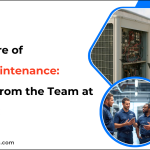The rise of proprietary trading firms has opened up new doors for retail traders.
You no longer need a huge personal bankroll to access serious capital. Instead, firms are funding skilled traders with structured programs and keeping a share of the profits in return.
But not all funded trading programs work the same way.
Most fall into one of two categories: evaluation-based models or instant funding models. Understanding the difference between these two could make or break your success.
Whether you’re new to prop trading or looking for your next firm, this guide will help you make a smarter call.
1. Understanding Evaluation-Based Funding
Evaluation models are what most people think of when they hear about prop trading challenges.
These programs test traders first, usually through a two-step process:
- Challenge phase: You need to hit profit targets without violating risk rules.
- Verification phase: Prove that your results were not just luck by doing it again.
Once you pass both steps, you get access to a live funded account.
This is the model used by many of the best funded trading programs. It’s designed to filter out inconsistent traders and reduce risk for the firm.
Pros:
- Lower upfront cost
- Builds discipline and structure
- Rewards consistency over time
Cons:
- Slower access to funding
- No room for error in strict challenge rules
- It can be discouraging for newer traders
If you’re confident in your system and don’t mind being tested, this route helps build strong trading habits and can lead to long-term success.
2. Exploring Instant Funding Programs
Instant funding skips the challenge altogether.
You pay a fee and start trading with a funded account immediately, no tests, no delays.
This model appeals to traders who already have experience and want to get to work right away.
It’s also a faster path to scaling up, since many firms let you increase your account size based on live results rather than simulated challenges.
But there’s a trade-off. Instant funding often comes with:
- Higher initial costs
- Stricter drawdown or risk limits
- Less flexibility in trading style
When comparing ftmo account prices with instant funding programs, you’ll notice the difference. Instant funding usually means you’re paying more for the convenience of skipping the test.
Is it worth it?
It depends on your confidence, capital, and ability to manage risk in a live environment.
3. Key Differences Between the Two Models
Let’s break it down simply:
| Factor | Evaluation Model | Instant Funding Model |
| Access to capital | Delayed (after passing challenges) | Immediate |
| Upfront cost | Lower | Higher |
| Risk tolerance | More lenient | Often stricter |
| Scaling potential | Structured and gradual | Fast if profitable |
| Suited for | Traders building consistency | Traders with proven track records |
| Payout structure | Standard with scaling | Varies, often performance-based |
There’s also a mental element here.
In an evaluation model, you’re in test mode- you might trade more cautiously or overthink setups.
With instant funding, the pressure is real from day one. You’re risking capital (even if it’s not yours), and the consequences are immediate.
Knowing how you react under different conditions can help you choose the better fit.
4. Costs and Value Considerations
Every prop trading model comes with fees.
You’re either paying for access to the evaluation process or immediate funding.
Understanding what those fees include (and what happens if you fail) is critical. Some programs offer resets or discounts on retakes. Others might charge more for fast-tracking.
Use ftmo account prices as a benchmark, but don’t just shop by cost.
Ask yourself:
- Does this program give me enough room to trade my style?
- What’s the payout structure like?
- Is there strong support and transparency?
Sometimes, paying a bit more upfront gets you a better long-term partner.
5. Choosing the Right Fit for Your Trading Journey
There’s no one-size-fits-all answer here.
Your decision should depend on:
- Your current skill level: Are you consistently profitable or still testing strategies?
- Risk tolerance: Can you handle drawdown pressure without panic?
- Time horizon: Are you willing to go through a challenge, or do you need funding now?
- Personality: Do you prefer structure or flexibility?
The best approach might even be hybrid.
Many of best best-funded trading programs now offer both models or something in between. This lets you choose your path without being locked into one structure.
Some traders even start with evaluation to build skills, then move to instant funding when they’re ready to scale fast.
6. The Role of Prop Firms in Supporting Trader Growth
It’s easy to focus only on account size and rules, but great proprietary trading firms offer more than capital.
They offer:
- Education and feedback
- Trading platforms and tech support
- Performance reviews and coaching
- Community or mentor access
A strong prop firm becomes your partner. They want you to succeed because when you profit, they do too.
So it’s worth evaluating the full picture- not just the trading account, but the tools, resources, and people behind it.
Transparency, clear rules, and responsive support are non-negotiable.
Conclusion
The choice between evaluation and instant funding comes down to how you trade and where you’re at in your journey.
Evaluation models build discipline and reward consistency.
Instant funding gives fast access to capital but requires strong risk management and confidence.
There’s no wrong choice, only the right match for your goals.
Explore ftmo account prices, compare the best funded trading programs, and partner with reputable proprietary trading firms that offer real support, not just capital.
Your trading journey is unique. The model you choose should help you grow, not hold you back.
Lynn Martelli is an editor at Readability. She received her MFA in Creative Writing from Antioch University and has worked as an editor for over 10 years. Lynn has edited a wide variety of books, including fiction, non-fiction, memoirs, and more. In her free time, Lynn enjoys reading, writing, and spending time with her family and friends.















